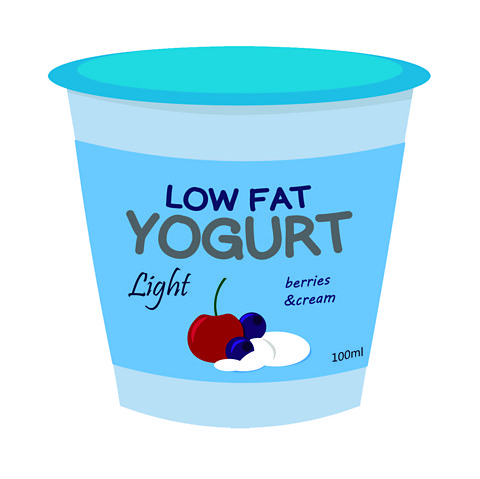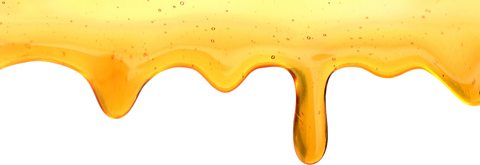How much sugar is hiding in your health food?

Lots of us are on a quest to eat more healthily in January. But what if the 'health' foods we choose are actually scuppering our resolutions?
On average, we eat a massive 70% more sugar than the recommended intake. We all know that most biscuits, cakes and fizzy drinks are jam-packed with sugar, but it's surprising how much sugar is hiding in 'health' foods. Here's what to look out for.
'Lower sugar' on the label
'Reduced sugar' or 'lower sugar' isn't the same as low in sugar. Always check the ingredients and nutrition details on the label.
According to the NHS:
- 22.5g or more of total sugars per 100g is high
- 5g or less of total sugars per 100g is low
When 'low-fat' equals 'high-sugar'
When manufacturers reduce the fat to make 'low-' or 'no-fat' products, they often add sugar to compensate. Some 'low-fat' foods contain more than six times the amount of sugar than their 'full-fat' counterparts. There is also evidence that we eat more if a food is described as вҖҳlow-fatвҖҷ вҖ“ as much as 28% more!

Experts warn some low-fat yoghurts, particularly fruity yoghurts, could contribute to obesity, tooth decay and other health problems due to their high sugar content. Choose yoghurt with no added sugar and add fresh fruit for your sweet tooth, if needed.
Rice cakes are a low-fat snack, but when covered in yoghurt or chocolate, they become a sugar-laden treat.

'Natural' sugar on the label
ThereвҖҷs no legal definition for 'natural', but we often consider it to indicate that the sugar in a food is better or healthier than other sugars. What's the truth behind 'natural' sugars?
Honey contains some vitamins and minerals, but 1 teaspoon of honey contains 6 grams of sugar, compared to the 4 grams found in 1 teaspoon of granulated sugar. Honey does taste slightly sweeter, so you might be able to use less of it to get the same amount of sweetness, but if you use the same amount it is not a low-sugar option.
Maple syrup has been poured on pancakes for decades, but in recent years it has been seen as a healthier alternative to sugar. Most maple syrup is produced by boiling maple tree sap. It might contain fewer additives than some sugars, but it is still sugar.
Agave syrup is a relative newcomer to the вҖҳnaturalвҖҷ sugar scene, but it is derived using a similar method to sugar cane or beet. When the plant is processed into syrup, any healthy, naturally occurring enzymes are transformed into fructose.
Fruit juice is classed as a free sugar and is added to products as such. As a drink, it comes packaged with vitamins and minerals, so if drunk in moderation (150ml glass) with a meal, it helps you to get your 5-a-day. Fun fact: pulp v no pulp actually makes very little difference.
Other names to look for on labels are glucose, fructose, sucrose, maltose, molasses, hydrolysed starch, maltodextrin and high fructose corn syrup.

Sugar for breakfast
Cereal. ItвҖҷs easy to fall for marketing ploys plastered all over 'natural', 'simple', 'authentic', 'high-fibre' cereals, particularly granola. But this is a distraction from their high-sugar content. One survey found that 32 out of 50 breakfast cereals are high in sugar. вҖҳServingвҖҷ sizes differ from brand to brand, making it difficult to compare how much sugar they contain, and they rarely give a realistic impression of how much someone will eat in one sitting. Always look at the nutritional information per 100g and be aware that if there is sugar in the nutritional information but no sugar or alternative in the ingredients, it is likely to come from dried fruit.
Cereal bars are often considered to be a healthy, fibre-packed snack, but many can be high in sugar. If you grab a bar for breakfast or include one in a lunchbox, check the ingredients and nutrition label first.
Naturally dried fruit is a healthier form of sugar because it comes packaged with fibre and vitamins. However, some dried fruits, such as cranberries, are soaked in sugar before being allowed to dehydrate. In all dried fruits the sugar is at a higher concentration than in fresh fruit because the water is removed during the processing. You can also wolf down more; a small box of raisins contains the around 90 grapes!

Sugar in energy bars and drinks
The term 'high-protein' has become synonymous with health. However, protein drinks, bars and balls can contain lots of sugar. This is often disguised as 'natural' sugar, but don't be fooled.
In energy bars the name says it all вҖ“ energy! This means calories and often sugar. Tuck into one of these and you might be getting more than 100% of your daily intake from a quick snack. If youвҖҷre concerned about sugar and want to consume a lot of energy in a bar, try these recipes.
Sports drinks often contain a similar amount of sugar to fizzy drinks. Some contain more than 13 teaspoons per bottle вҖ“ almost twice the recommended daily amount. These 'thirst-quenching' drinks 'with vitamins and minerals' to restore energy, are only useful to elite athletes. These buzzwords are a distraction to make you think you're getting a sweet deal.

What about sweeteners?
Some studies suggest if you eat sweet things, your appetite increases because the brain's 'sugar reward' pathways are activated, regardless of whether the food or drink is artificially sweetened or not. This can cause you to snack more which will make avoiding sugars harder.

How to reduce your sugar intake
Added free sugars .
Re-educating yourself about where free sugars are prevalent and how to read food labels will motivate you to reduce your sugar intake. Once you have decreased your sugar consumption, over time you will crave less sugar. It doesnвҖҷt have to be an all-or-nothing approach, slowly ease your intake of free sugars to the recommended limits.
If you're still confused, you can read our guide to free-sugars and here is a quiz summary.
Free sugars
Free sugars are the sugars added to foods and drinks by manufacturers, cooks and consumers. As well as sugar, they include honey, syrups and fruit juices. These are the sugars we need to eat less of.
Non-free sugars
Sugars in fresh and frozen fruit and vegetables and dairy products are not free sugars. This is because the fibre and water in these foods slows down your digestion and absorption of the sugars, preventing you from getting a sugar spike. Fibre also limits the amount you can eat because it makes you full.
How much sugar is OK?
Added free sugars should make up no more than 5% of the calories you get from food and drink each day. This is estimated to be 30g, or roughly 7 sugar cubes (7 tsp), per day for those aged 11 and over.

3 tips to reading packaging
Nutrition labels do not provide information about added sugar, just total sugars, which includes both free and non-free sugars. This can be found under carbohydrates (of which sugars). ItвҖҷs a good place to start but remember these tips.
- The higher up 'sugars' or sugar products such as 'natural' sugars are on an ingredients label, the greater the proportion of sugar in the food.
- Sugar has many names, so check the carbohydrates (of which sugars) figure in the nutrition box. Anything above 22.5g of sugar per 100g is classed as high and anything below 5g per 100g is classed as low.
- Check out the health claims on packaging. If it seems too good to be true, it probably is.